Only 3 ingredients to make these chewy, bouncy, and flavourful Chinese egg noodles in a stand mixer! Meaning you don't need to knead the dough like crazy with your hands. Isn't that great?
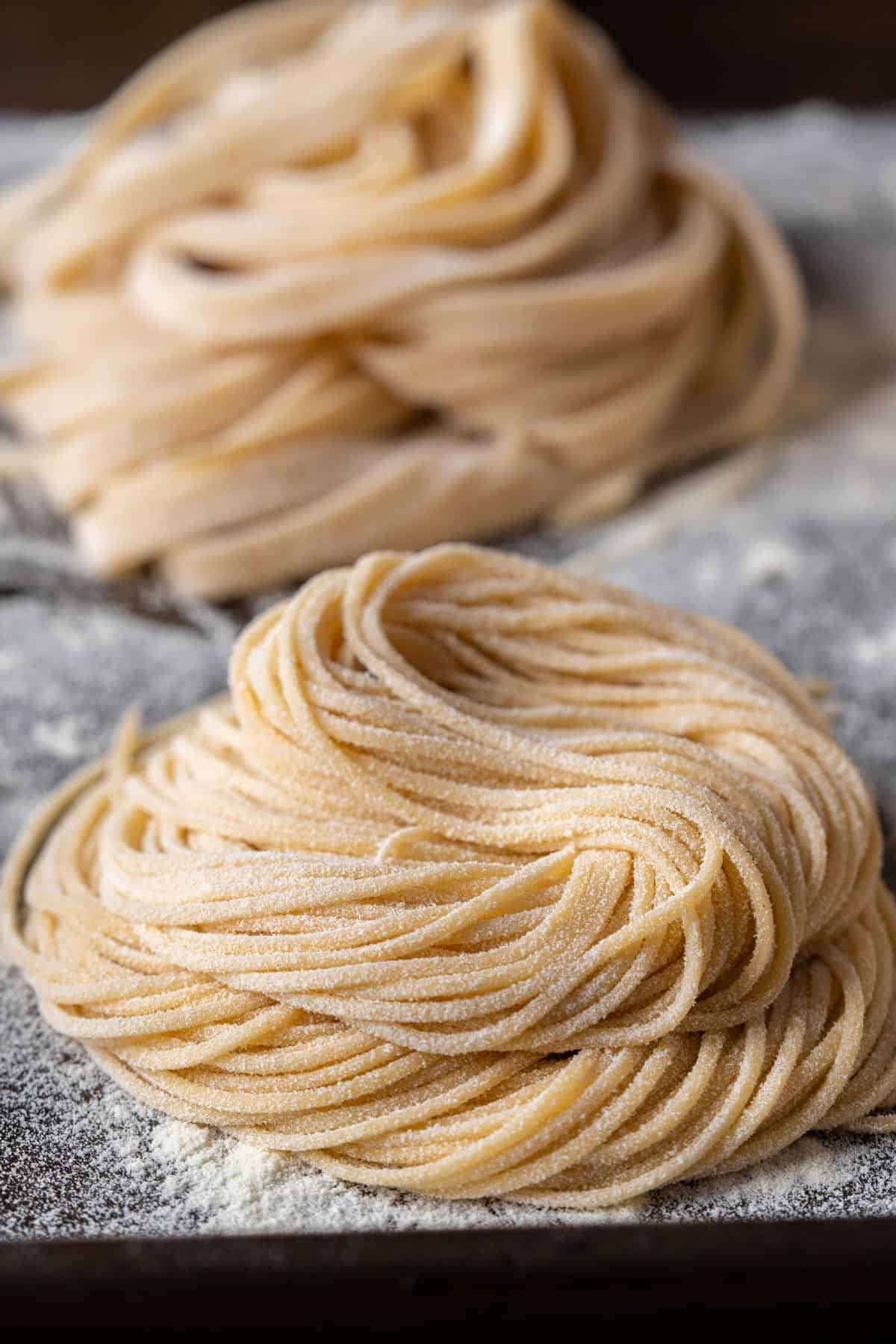
📮 Save this recipe for later!
Trust me, making homemade Chinese egg noodles has never been this easy! While I love my hand-knead egg noodles using a stand mixer is such a huge help. I'm more than confident to say, this is my new favorite way to make them.
These noodles are freezer-friendly, just like my crispy Chinese spring rolls! I've made them several times already this week and I have them all frozen.
They're great in soups like my delicious 20-minute laksa curry, spicy ramen with air-fry chicken katsu, or stir-fry like my easiest mee goreng and 10-minute lo mein beef noodles.
Jump to:
Using The Right Flour Matters
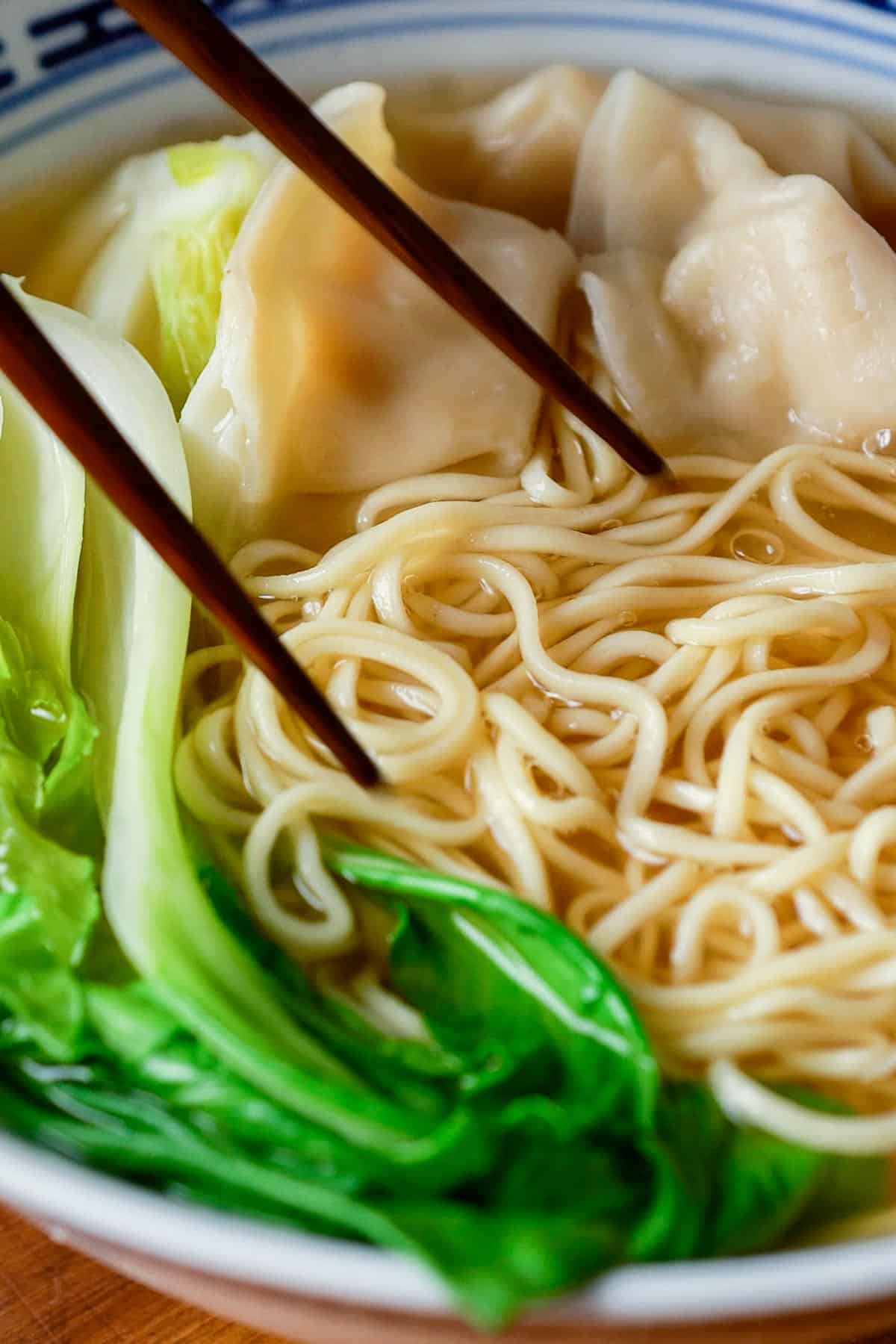
Yes. It matters by lot, guys! Trust me on this.
Chinese egg noodles are known and appreciated for their chewy and bouncy texture. And that can only be achieved by using high-protein flour that is kneaded for quite some minutes.
That's why I'm using bread flour. Not all-purpose flour. Plus using all-purpose flour would mean a different liquid ratio, it's a whole other story.
The kneading process will form strong gluten in the high-protein dough. Strong gluten means the dough has more structure, will be able to hold its shape better, easier to stretch, and the strands are stronger and more elastic.
They're all the good things we want in our egg noodles, guys!
And if you're wondering, Chinese egg noodles are not the same as spaghetti. To begin with, spaghetti doesn't require eggs in the recipe. And the biggest difference is, homemade spaghetti is known for its light and tender texture. It's the opposite of Chinese egg noodles.
So let's not get confused, alright?
My Easiest Ratio of Flour And Eggs
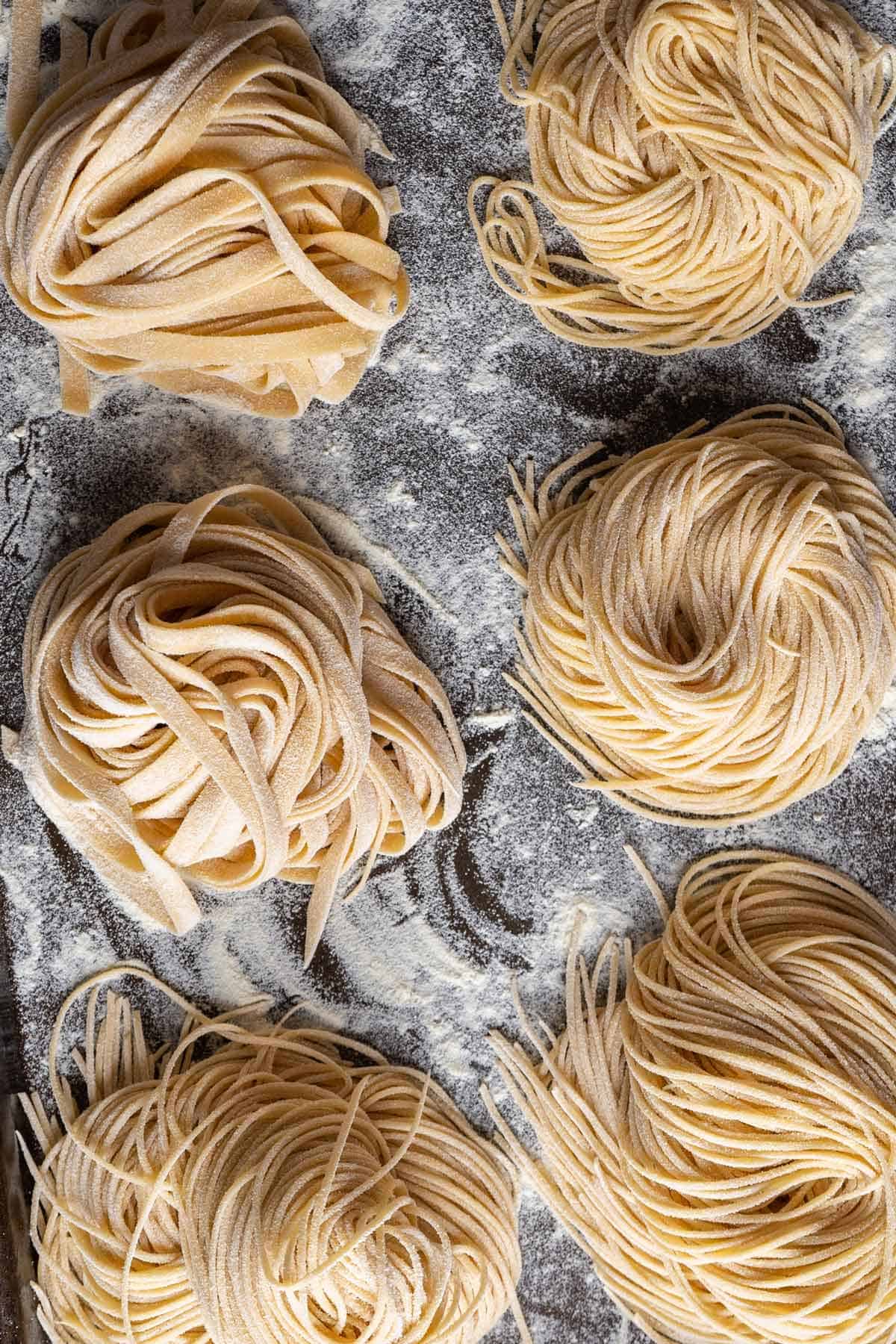
I've been using this ratio for a while and it works without fail. Also, it's such an easy calculation that you can adjust the number of eggs according to your liking. Although I'd recommend using at least 2 eggs with this stand mixer recipe so that there's enough dough to knead in the bowl.
I also highly urge you to invest in a kitchen scale because it's more precise, especially for this type of recipe.
So here's my ratio.
BREAD FLOUR: EGGS
1.8: 1
It means, multiplying the weight of the eggs by 1.8 to get the weight of the bread flour. This works either using grams or ounces.
ie: 4 large eggs = 220 grams.
Amount of bread flour = 220 (grams) x 1.8 = 396 grams (round it up to 395 grams).
Use this ratio as a general guide. Other factors can influence the amount of flour needed such as the flour's brand, the eggs' size, or the humidity of the day.
You might need a tad more or a tad less. Continue reading my tips for this recipe on how to do quick adjustments.
Ingredients & Substitutions
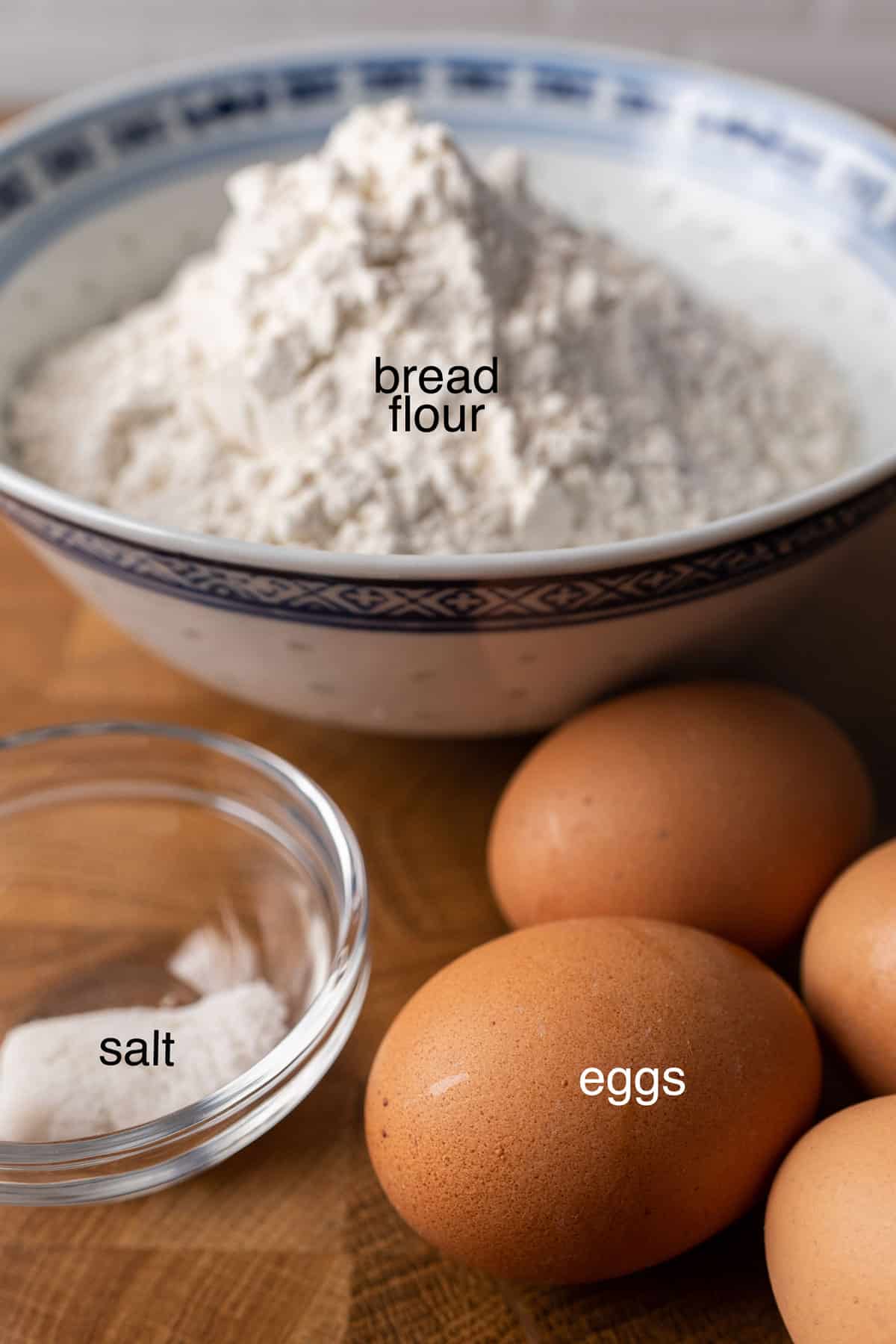
Bread flour - A must. Bread flour is a high-protein flour and that's very important. As I mentioned earlier, high-protein flour will form stronger and better gluten when kneaded. This will result in chewy elastic noodles. I recommend a minimum protein content of 12 grams / 100 grams of flour.
Eggs - I use large-sized. Any size will do actually if you're using my flour: egg ratio guide above.
How To Make Egg Noodles Using A Stand Mixer
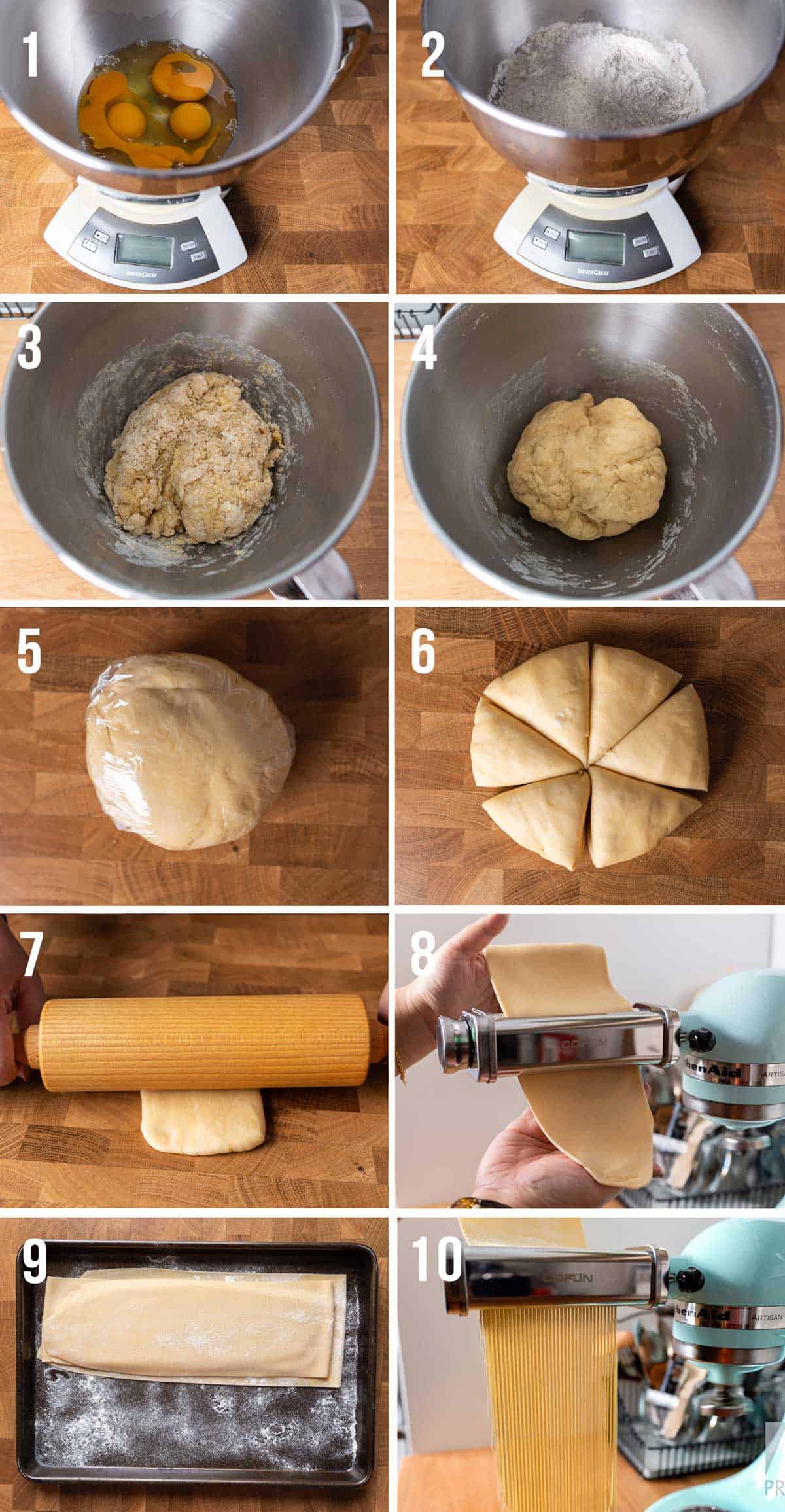
- Place the mixing bowl on a kitchen scale, crack the eggs in, and weigh them.
- Multiply the eggs' weight by 1.8, to get the weight of bread flour needed. Add bread flour and salt to the mixing bowl.
- Use the hook attachment at the lowest speed, and mix until everything comes together.
- Use speed 2 and knead for 10 minutes. You're going to get a stiff dough.
- Form the dough into a ball, wrap it with cling film, and rest it for 30 minutes. The dough will become softer then.
- Cut dough into 6 pieces. Always cover them with cling film to prevent them from drying.
- Take 1 piece form it into a small rectangle and roll it into ½ inch thickness.
- Pass it through the pasta roller several times, starting from the thickest setting to the hand-cut pasta setting (around 2-3 mm). See your attachment's manual for details.
- Sprinkle both sides of the rolled sheet with semolina or cornstarch to prevent it from sticking. Repeat with the rest of the dough pieces.
- Pass the rolled sheet into the pasta cutter. Sprinkle with more semolina and lightly toss the strands around to make sure they're fully coated. The noodles are ready to be used!
Tips For This Recipe
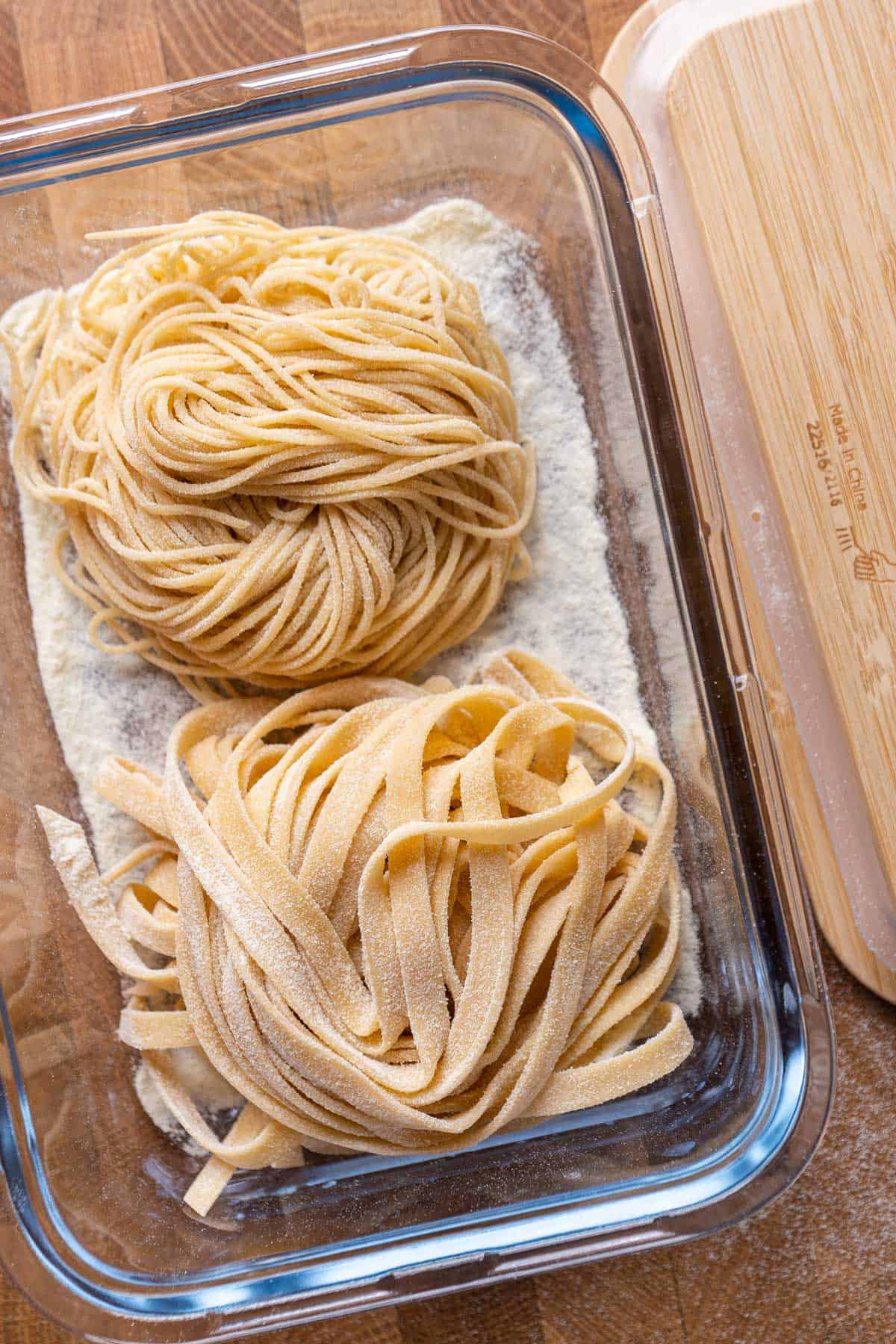
- Use semolina or cornstarch to prevent the dough from sticking. I love using semolina like this one.
- The dough's consistency is perfect when you touch and press it, it doesn't stick to your fingers but yet still soft (not too stiff that it starts breaking apart as you're pressing).
- If the dough is sticky, add flour 1 teaspoon at a time, until you get the perfect consistency dough.
- If the dough is too stiff, wet both of your hands and rub them on the dough. Continue kneading and see if that softens it. Repeat as needed.
- Always cover the unrolled and uncut dough in cling film to prevent them from drying.
How To Serve & Store
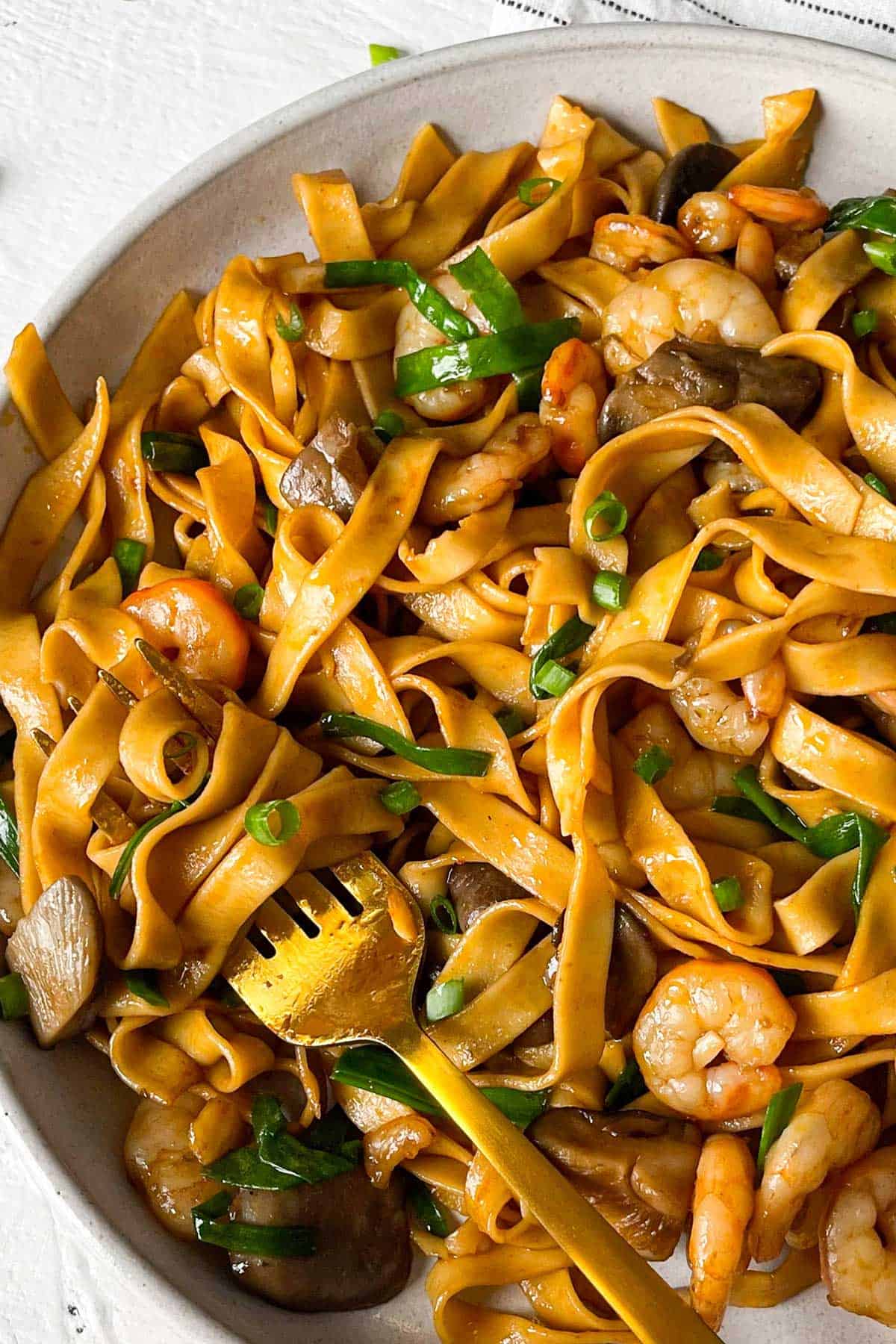
Serve - They're great noodle soups, or for stir-fry. Cook in boiling salted water for 1-2 minutes.
Store - Store dough or fresh noodles in an air-tight container, in the fridge for up to 3 days. Freeze them in an air-tight container (the bundles shouldn't be touching each other) for up to 3 months. Or you can freeze them on a tray for 2 hours and then place them in a ziploc bag. Be careful not to smash the bag to prevent the noodles from breaking.
If you love working with flour, make my homemade dumpling dough for boiling. It's a classic!
FAQs
I'm all about being flexible but unfortunately for this recipe, I strongly believe you'd benefit more from using a kitchen scale. There are just too many flour weight differences (for this recipe) because of the way everybody measures flour. Trust me, use a kitchen scale.
It's a stiff dough, to begin with. It shouldn't stick to your fingers when you press it. Although it shouldn't also break apart when you press it. It should be soft enough to form a ball.
No worries, just add flour (1 teaspoon at a time) and continue kneading for a bit until it doesn't stick anymore.
Don't panic. Just wet your hands with water, and rub them on the dough. Continue kneading. Repeat, if needed, until it's not so stiff anymore.
I don't recommend that since they'll get dry and will break apart when you touch them later. Keep them in the fridge or freeze them (see my tips on how to store them above).
Yes, you can make the dough and keep it in the fridge in an air-tight container for up to 3 days, before rolling and cutting it.
Cut the kneaded dough into 3 pieces. Roll each piece into a rectangle of 2 mm thickness using a rolling pin. Sprinkle with semolina on both sides as you go. Rest the dough for 10-15 minutes if it's too difficult to roll. Fold the sheet and cut it to the thickness that you prefer with a knife. You can watch how I do it with my hand-kneaded Chinese egg noodles.
Watch How To Make Them
📖 Recipe
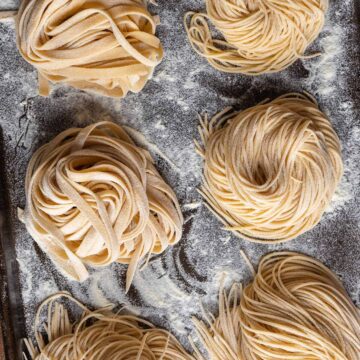
Chinese Egg Noodles In Stand Mixer
Ingredients
- 220 grams large eggs (4 large eggs), room temperature
- 395 grams bread flour
- 1 teaspoon salt
Instructions
Dough
- Add all ingredients to the stand mixer bowl. Using the hook attachment at the lowest speed, mix for several minutes until everything comes together.
- Once you get a rough dough ball, press it to see if it sticks to your fingers. If it does, add 1 teaspoon of flour and continue kneading. Repeat until the dough doesn't stick to your fingers.
- If the dough is so stiff and cannot form a dough ball, then wet your hands, rub them on the dough and continue kneading. Repeat until the dough can form a dough ball and is not so stiff.
- Once you get the right dough consistency, knead for 10 minutes. Form it into a ball, cover with a cling film and rest it for 30 minutes. The dough will become softer then.
Roll
- Using a dough cutter, cut the dough into 6 pieces, and cover them with cling film to prevent them from drying. Take 1 piece and roll it into a small rectangle shape of ½ inch thickness. Pass it through the pasta roller several times, starting from the thickest setting to the hand-cut pasta setting (see your manual for details).
- Sprinkle both sides with some semolina and set aside. Fold in half if needed, without pressing it. Continue with the rest of the dough pieces.
Cut
- Change the attachment to the pasta cutter. Grab a rolled dough and gently pass it through. Toss the cut noodles with semolina, and place them in an air-tight container (dusted also with semolina). Continue with the rest of rolled dough pieces. Change the pasta cutter thickness to your liking.
- Keep in the fridge for up to 3 days, or freeze for up to 3 months. Thinner noodles are suitable for soups while wider ones are best for stir-frying.
Cook
- Bring a pot of water and salt to a boil. Add in the noodles and immediately spread them apart. This prevents them from sticking to each other. Cook for 1-2 minutes. Drain and use them to your liking! I like to toss them immediately with a bit of sesame oil to prevent them from sticking to each other (more if I want to use them in a stir-fry).
Notes
- Use my general ratio as a guide. Weight of Bread flour : Eggs is 1.8 : 1.
- Weigh the eggs, and multiply it by 1.8 to get the weight of the bread flour.
- Use a minimum of 2 eggs so that there's enough dough to knead in the stand mixer bowl.
- This is a stiff dough, don't tempt to add lots of water to make it soft like bread dough.
- The amount of bread flour needed is influenced by flour brand and humidity. Do check out my tips above for quick adjustments.
- The dough/noodles will turn darker as it sits in the fridge. This is because it starts to absorb water and become oxidised. It's not bad. Despite the look, the flavour remains delicious!
Nutrition Facts
The nutrition facts provided are an estimate per serving. Accuracy is not guaranteed.

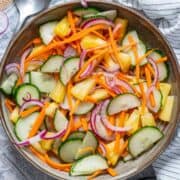
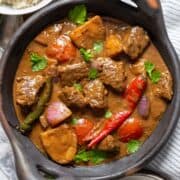


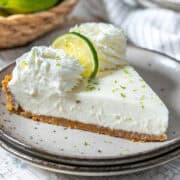



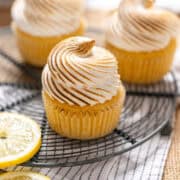


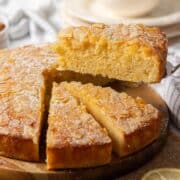
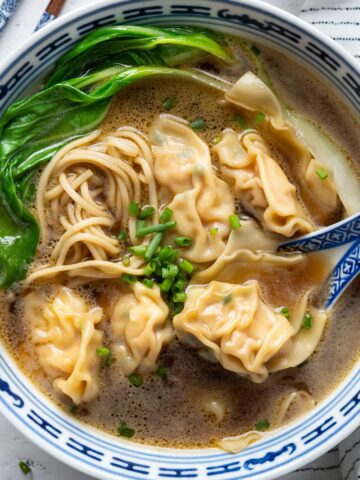


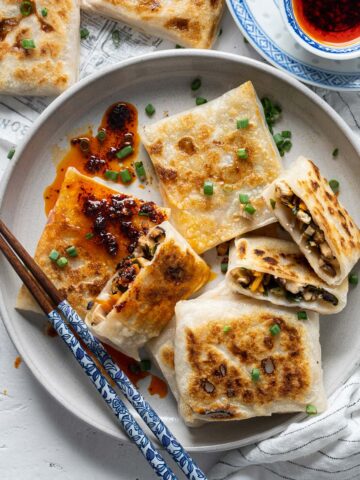
Sally says
This was so easy and tasted fantastic! Thank you so much for the recipe.
Bea & Marco says
Yay! So excited to hear that. Thanks for giving the recipe a go, Sally!
Sangeeta says
Can I find bread flour which whole wheat?
Or can simply use whole wheat flour for this Chinese egg noodles ?
Thanks,
Sangeeta
Bea says
Yes, there's also whole-wheat bread flour. This recipe uses bread flour (not whole-wheat), so if you want to substitute the flour, you'll need to adjust the liquid (please refer to the video to see how and the dough's consistency). Every flour has its own characteristic. Hope it helps!